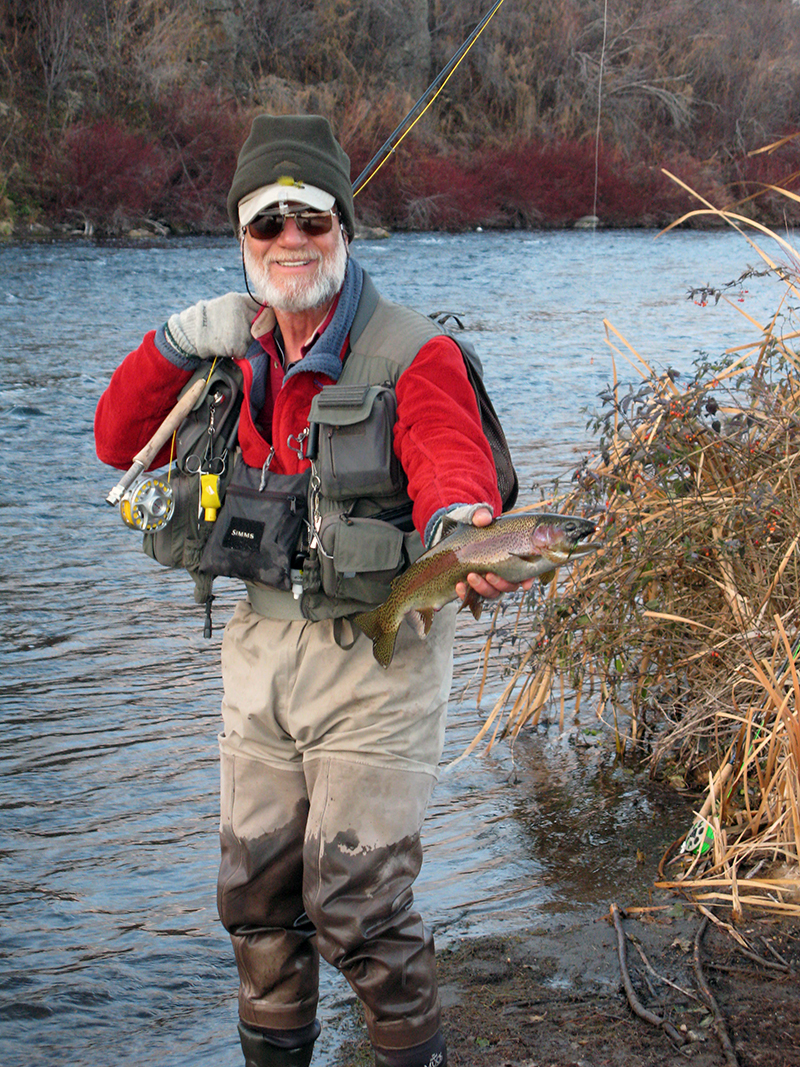 For a fly fisher, surviving winter at high elevation is usually an arduous and inconsistent process. Snow and bitter cold temperatures can dominate the weather for months at a time and a visit to the river is often times only to watch through the months of December, January, and February.
For a fly fisher, surviving winter at high elevation is usually an arduous and inconsistent process. Snow and bitter cold temperatures can dominate the weather for months at a time and a visit to the river is often times only to watch through the months of December, January, and February.
With ice and cold winds as limiting factors, finding a window of opportunity for even a few hours of deep water nymphing or streamer fishing can be rare if human comfort assumes a role in determining whether to fish or stay indoors. Gradually, however, the daytime hours lengthen and subzero temperatures eventually become a casualty of the calendar. And as an ice bound river begins to regain its flowing character, there comes a glimmer of expectation for the first true sign of an eventual spring.
Although the timing of conditions suitable for dry fly fishing can vary from year to year, the sight of the first rise of a new season is always something to savor. And while the source of surface interest among trout in late winter is invariably of a size that dictates keen refinement in all aspects of tackle and skill, nothing in the entire year is more welcome than the humble midge.
While chironomids on local still waters and elsewhere can be realistically imitated on a hook as large as size 12, the term midge is an appropriate description when they are found on moving water. Seldom larger than size 20, midges are available to trout in the Henry’s Fork and most other streams throughout the year. However, they are never more important than in cold weather conditions and are often the only hatch to be found during the longest season of the trout states of Idaho, Montana, and Wyoming.
Because of a craving for dry fly fishing after a long absence, I watch for conditions that promote surface availability of the tiny insects. Air temperatures that exceed the freezing point by 6 to 8 degrees will usually stimulate late winter and early spring emergence, and overcast skies are often a positive factor in tempting wary trout to the surface. Temperatures below 50 degrees seem to hold the adults on the surface, and this increases the potential for finding rising trout.
Trout feed more efficiently in slower currents when floating midges are the target, but gently riffled water should not be ignored. Seeing the miniature dry flies is completely dependent upon fishing as close to a surface feeder as possible, regardless of the water type. A cast beyond 30 feet will likely put a size 22 out of view, at which time you will be required to set the hook when a rise appears in the area where you think the fly is located.
By necessity, midge patterns must be of relatively simple design, as is the case with all exceptionally small imitations. Because of its unique flotational properties, CDC works well for midge patterns that must be supported on the surface with a minimal amount of material. My favorite floating patterns also incorporate a sparse application of hackle, and stripped goose biots are a regular feature as well.
While my midge box contains an extensive assortment of patterns representing all phases of the life cycle, three distinct floating imitations have demonstrated reliable productivity on waters as distant as Japan. And I fear little shame in admitting that their favored status is also based on the relative ease in which they can be seen on the water.
 CDC Biot Midge Adult
CDC Biot Midge Adult
This pattern rides fairly high on the water and parallel to the surface in a manner that represents a fully emerged midge adult.
Hook: TMC 100 BL size 18-24
Thread: Gray 8/0
Abdomen: Canada Goose Biot or Stripped Peacock Herl
Wing: Sparse Lt. Dun CDC
Thorax: Gray Dubbing
Hackle: 1-3 turns of Grizzly
 CDC Hanging Midge
CDC Hanging Midge
This easy to see midge pattern rides partially submerged with only the wing and hackle showing above the surface.
Hook: TMC 100 BL size 18-24
Thread: Gray 8/0
Body: Canada Goose Biot or Peacock Herl
Thorax: Gray Dubbing
Wing: White CDC
Hackle: 1-3 turns of Grizzly
 CDC Cluster Midge
CDC Cluster Midge
In a way, this pattern allows a bit of cheating on the usually very small midge patterns by imitating a cluster of mating insects that often swarm together on the surface.
Hook: TMC 100 BL size 14-20
Thread: Gray 8/0
Body: Peacock Herl
Hackle: Grizzly palmered
Wing: Sparse White CDC


Leave a Reply